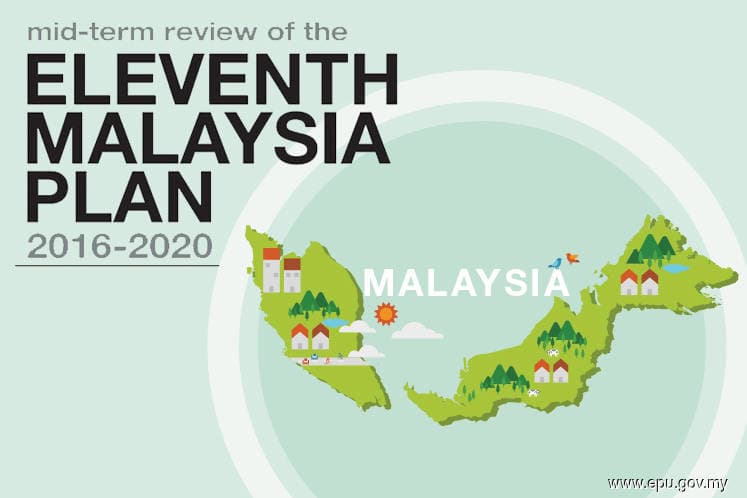
This article first appeared in The Edge Financial Daily on October 19, 2018
KUALA LUMPUR: Economists are largely positive on the updates made to the 11th Malaysia Plan (11MP) following the government’s mid-term review of the five-year road map, as the economic and governance reforms it aspires to achieve are seen as more realistic given the fiscal condition of the nation. But execution remains key.
Some of the economic measures include cuts in development spending and a more flexible fiscal target to shore up growth.
Gross domestic product (GDP) growth expectations have been scaled back to between 4.5% and 5.5% from the previous target of between 5% and 6%; the fiscal deficit target by 2020 is expected to be at “a wider albeit more realistic” 3% of GDP versus 0.6% previously, and the development expenditure ceiling was cut by 15% to RM220 billion compared to RM260 billion originally.
Sunway University Business School professor of economics Dr Yeah Kim Leng said the revised targets are realistic against the background of an increasingly challenging external environment.
“The revised plan rightly emphasised prudent debt management and fiscal discipline through a gradual pace of fiscal consolidation via spending cuts, rather than an immediate increase or introduction of new taxes,” he told The Edge Financial Daily.
Yeah said that the delay in achieving fiscal balance until 2024 should not be credit negative as long as government spending continues to support reasonable growth and full employment, along with a steady shift to higher-value activities in the economy.
He said Malaysia could reap some “democracy dividends” as the reforms are expected to boost local and foreign investors’ confidence, which could sustain the growth of private investment.
“Overall, the revised 11MP has set the broad terms of a medium-term fiscal framework that should help to reduce somewhat the domestic uncertainties faced by the private sector.
“The key challenge then is for the new government to raise its execution capabilities,” Yeah said.
Similarly, UOB Global Economics and Markets Research senior economist Julia Goh said: “The plan walks the line of supporting growth and well-being of the people despite fiscal constraints. The plan is both pragmatic and relevant to address lingering shortfalls, excesses and structural challenges facing the country.
“It is reassuring that the annual budgets will be re-engineered to be more aligned with the five-year plan. If properly executed, it should propel Malaysia to new heights,” she said.
Goh also noted the wider fiscal deficit target of 3% of GDP by 2020, and expectations that the fiscal deficit target will be temporarily above the 2.8% target for 2018 set in the previous budget before the government reverts to its fiscal consolidation path.
In view of this, she sees the government resetting the fiscal deficit target for 2019 to above 3%, to account for overstated revenues in previous years given a sizeable amount of tax refunds owed of RM35 billion or 2.5% of GDP.
Others point out that the government’s intention to strengthen the procurement framework by encouraging competition to avoid contract monopolies and direct negotiations could also help in lowering expenses.
Socio-Economic Research Centre executive director Lee Heng Guie said government procurement accounts for about 15% to 20% of GDP, which has been costly for Malaysia’s finances.
He told The Edge Financial Daily that an estimated RM200 billion to RM270 billion of total public spending is contracted out for supplies, services and works every year, adding that government procurement is a potential source of conflicts of interest and corruption.
“As such, effective governance of public procurement is pivotal to help strengthen the government’s management of finances while maximising public resources for the best value projects.
“If executed effectively, the strengthening of the procurement process can make a major contribution to attaining the goal of fiscal balance, going forward,” he added.